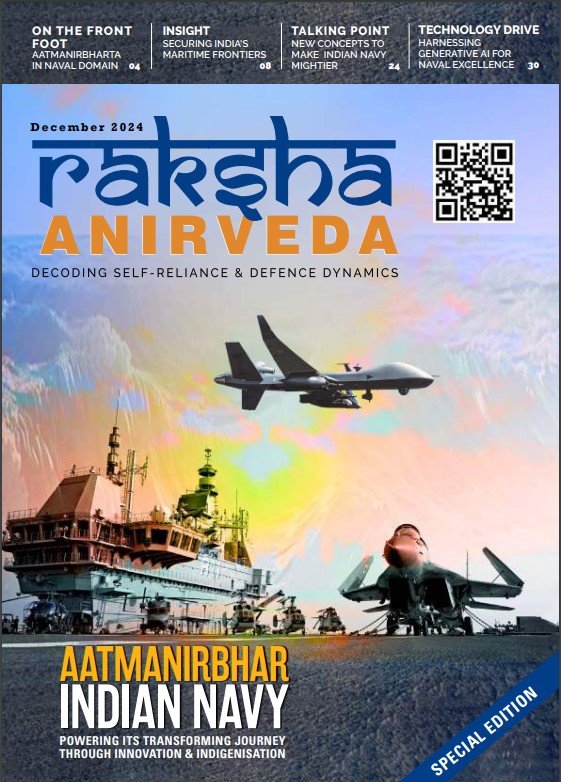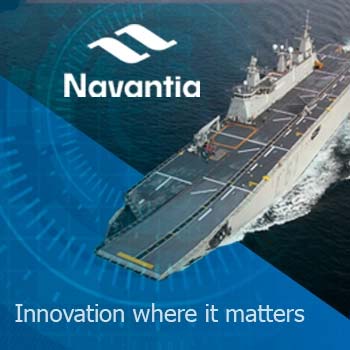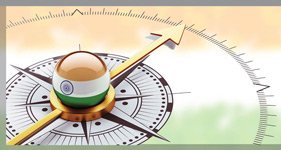The global aerospace industry is experiencing remarkable growth, driven by increasing demand for air travel and advancements in defence technologies. In 2024, nearly 5 billion passengers flew worldwide, supporting a commercial aerospace manufacturing sector valued at $373.61 billion, projected to reach $791.78 billion by 2034 at a CAGR of 7.8%.
Similarly, the global defence aerospace market, encompassing military aircraft, missile defence, and naval and land systems, stood at $1.45 trillion in 2024 and is expected to grow to $2.41 trillion by 2033, at a CAGR of 5.83%.
Despite this global expansion, India remains heavily dependent on imports, particularly in defence and commercial aerospace. However, with progressive policy initiatives and a strong focus on innovation, India is positioning itself as a key player in aerospace manufacturing by leveraging technology integration, supply chain localisation, and cost optimisation.
India’s Aerospace Ecosystem and Challenges
India has some aerospace design and manufacturing capabilities, nurtured through government investments and initiatives by research bodies and public sector companies. In recent years, participation of the private sector has increased. Many foreign OEMs are increasingly looking at India as a sourcing hub for engineering manufacturing, supported by a large talent pool, policy support from the government, and improved infrastructure. While the change is in the right direction, it is still far from the rightful contribution that a large nation like India should make to the global aerospace and defence market.
Indian imports are estimated to be $15 billion annually for commercial and military aviation, while exports are around $2 billion. India’s contribution to global commercial aviation is likely less than 2% of the overall market. Several key challenges persist:
Raw Material Constraints: Most raw materials such as electronics and semiconductors, are imported. The certifiability of metals remains a constraint.
Certification: The certification ecosystem needs significant development. India also lacks strong bilateral agreements with recognised regulators like the FAA and EASA, which places an extra burden on developing certifiable products in India.
Limited Product Design: While manufacturing and engineering services have grown in recent years, the ability to develop complete products with local IP is still lacking.
Skills: Skill development across engineering and manufacturing still needs improvement.
Quality & Processes: Awareness of aerospace processes and adherence to world-class quality standards have gaps.
The Path to Transformation
Each of the gaps listed above will need focused attention. The government can play a significant role in strengthening regulatory frameworks, skill development, and policies to incentivise investment in the sector. The industry also needs to take greater ownership in the segment in terms of design ownership and developing a manufacturing eco-system aligned with the needs of the aerospace sector.
Electronics in Aerospace
Electronics and software are increasingly required in modern aircraft, and may account for about a third of the aerospace market. It also represents parts requiring higher sophistication. Avionics, sensors like radars, cameras, flight control and management software, and communication systems are critical for safety and efficiency. This has been of particular focus of Cyient DLM. Its facilities were one of the first in the country to achieve AS9100 and NADCAP certifications. Cyient DLM undertakes the manufacturing of electronics for multiple OEMs in the commercial and defence aerospace sector. Cyient DLM is also doing pioneering work in India for the design and certification of complex electronics for commercial aviation.
The semiconductor mission for the country should make semiconductor components readily available in due course. This will enable greater value add from India. Design and creation of IP, along with certification eco-system for aerospace electronics, is an area that should be a priority sector alongside manufacturing.
Cyient DLM, one of the first in India to achieve AS9100 and NADCAP certifications, manufactures electronics for multiple OEMs in the commercial and defence aerospace sectors. Cyient DLM is also doing pioneering work in India for the design and certification of complex electronics for commercial aviation
Vision 2033: India’s Aerospace Roadmap
India should aim for at least a 10% share of the global aerospace market by 2033. India must develop a robust supply chain ecosystem to reduce import dependence and enhance domestic design and manufacturing capabilities. Strengthening private sector participation in R&D and innovation will be crucial in advancing cutting-edge aerospace technologies.
Additionally, improving certification capabilities to meet global aviation standards will help Indian manufacturers integrate seamlessly into international supply chains. Finally, fostering strong public-private partnerships will accelerate industry growth, drive investment, and position India as a leading player in the global aerospace sector. With the right strategy and collaboration between industry stakeholders, policymakers, and global partners, India’s journey from an aerospace importer to a global manufacturing leader is well within reach.
The future of aerospace is being written today — India has the opportunity to lead this story.
–The writer is Senior Vice President and Chief Technology Officer at Cyient DLM. The views expressed are of the writer and do not necessarily reflect that of Raksha Anirveda


















